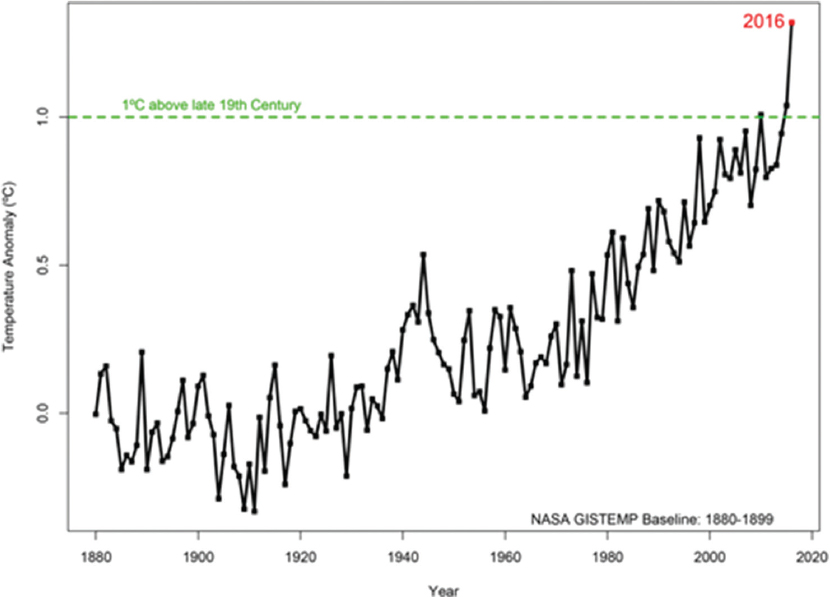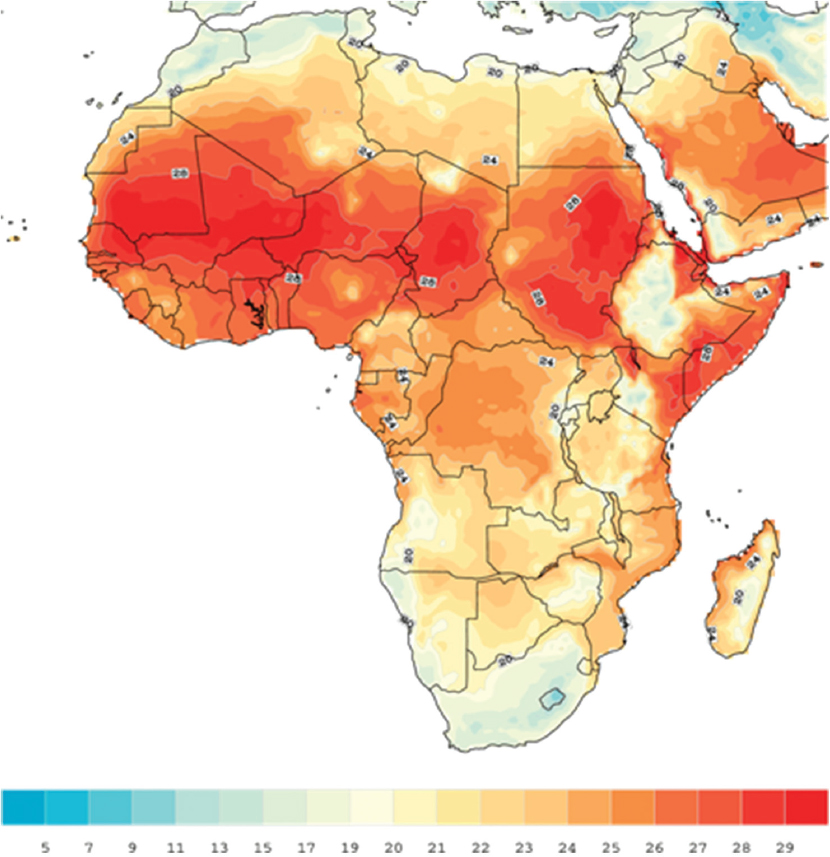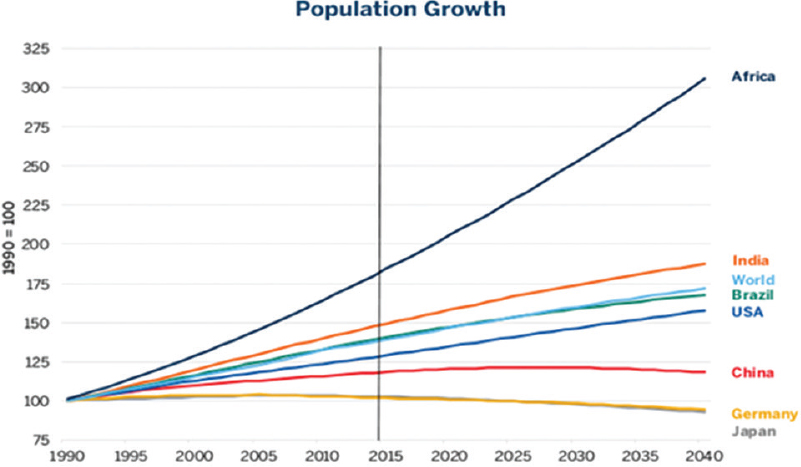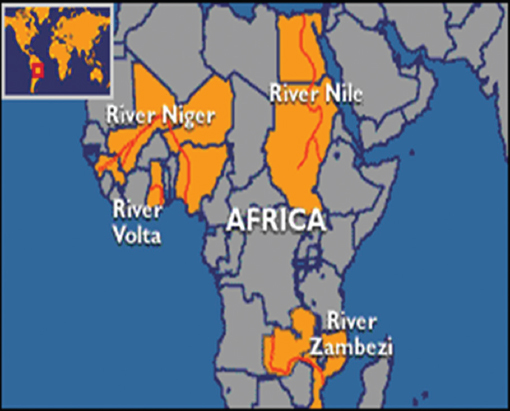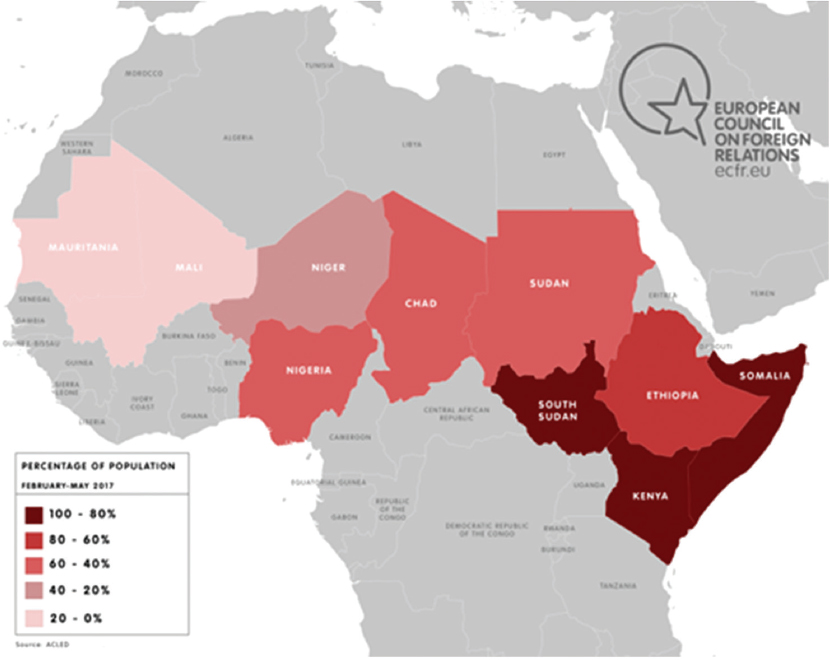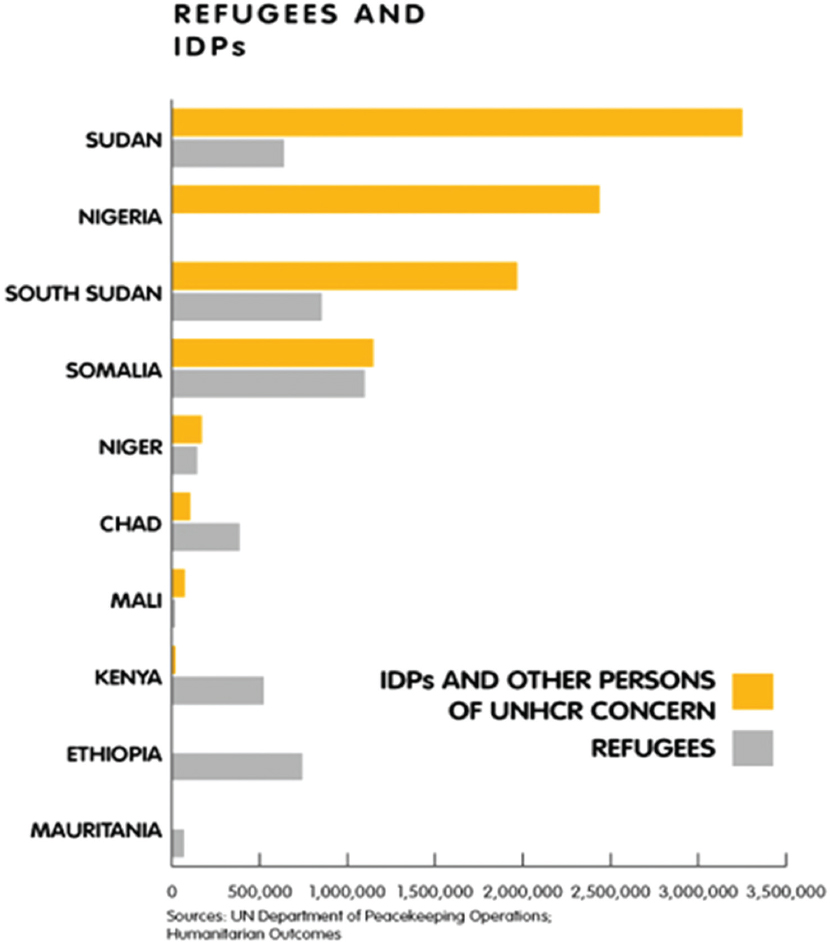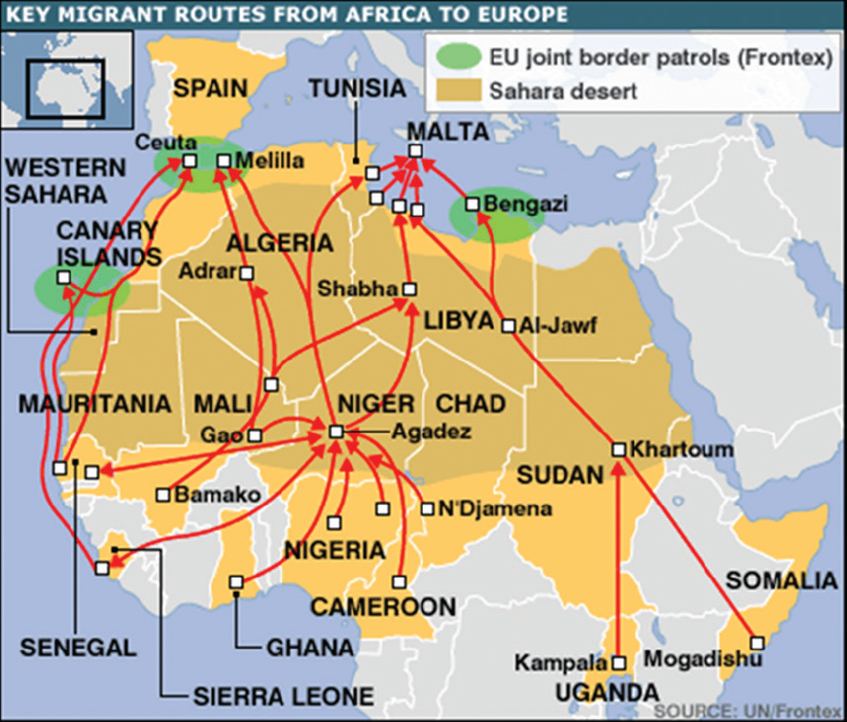1.INTRODUCTION
In recent years, the role of water has been increasing. The scarcity of this essential resource is getting to be more and more of an issue. There is a strong link between water and society. The lack of water could cause serious security challenges. The scarcity of water could cause radical reactions - such as armed conflicts - in society to get control over the water supplies. During the history of humanity, to seize the resources was one of the fundamental causes of wars. (Szalkai, 2012) Africa is the second most arid continent in the World. (Abdeen, 2010) Africa is certainly a divided and colorful continent in ethical, economical, and religious aspects, which sometimes causes certain tensions. Water scarcity is one of these challenges. It could boost other - already existing - tensions.
According to the international definition, water conflict is: “The fight with the sole or primary purpose of gaining access to water, or where water forms the central weapon of offense in the arsenal of the aggressor.” (Ashton, 2000). There are authors who support the aforementioned definition (Kirmani, 1990; Khroda, 1996; Wolf, 1996; Pallett, 1997; Turton, 1999; 2000).
There are two significant causes of water scarcity in Africa.
1.1. Climate Change
During the past 100 years, the planet’s average temperature has been growing about 0.9°C. This process has been accelerating in the past 35 years [Figures 1 and 2]. It is relevant to emphasize that 2016 was the warmest year since the 19th century (NASA, 2018).
Figure 1. The Average Planet Temperature over the past decade.
Source. NASA 2018
Figure 2. The Climate Change in Africa.
Source: Strauss Center’s Climate Change and African Political Stability
There are countless consequences of global warming. These effects seriously affect the African continent. In Africa, the average precipitation is decreasing, which causes difficulties to provide sufficient amounts of high-quality drinking water, which is essential for agriculture and food production. There is no life without water, which is essential to life. The water scarcity forces the local population to leave their territories and look for new places to live. The migration develops conflict between the newcomers and the original local population.
Climate change generates serious challenges in Africa. The lacks of resources such as water and agriculture products aggravates tensions in the concerned countries. These countries are already facing challenges in connection with social, security, and economic issues. Water scarcity, which is one of the consequences of climate change, insufficient water management, and overpopulation, is capable of inflaming already existing conflicts. In general, water scarcity is not the primary cause of war, but it is undoubtedly one of the most important reasons. The water and food scarcity add oil to the fire.
The phenomenon is an important issue in Africa. The continent suffers from the consequences of climate change. Especially, the arid territories are affected by the situation.
1.2. Overpopulation
Regarding the water conflicts, another important factor is overpopulation. According to United Nations estimates, the population of Africa is 1.2 billion. This means that the African population is 16% of the total world population (United Nations, 2017).
There has been a rapid population explosion on the continent. In recent years, the population has been growing by 30 million people per year. By the year 2050, around 2.4 billion people will live in Africa [Figure 3]. According to the estimates, the annual growth of the population will be 42 million (Bish, 2016).
Figure 3. The World’s Population Growth.
Source: U.S. Census Bureau
The rapidly growing population is consuming more water and food resources. The lack of resources causes tensions in society and raises the economic and security challenges in the affected African countries.
2. WATER CONFLICTS IN AFRICA
At present, there are no water wars in Africa, but the possibility of these conflicts is increasing. In the recent past and today, there are the following conflicts and disputes connected to water shortages and scarcities around Africa. In the Northeast African region, the hotspot is the Nile conflict among Egypt, Sudan, and Ethiopia. (Besenyő and Miletics, 2014) In the West African region, the Volta River and the Senegal River cause conflict. The Volta River is also the hotspot between Ghana and Burkina Faso, and war has already broken out once for the Senegal River between Senegal and Mauritania. In the Central African region, tension increased among Niger, Mali, and Nigeria. Nigeria is involved in the conflict over Lake Chad as well. In the South African Region, Lesotho and the South African Republic as well as Botswana, Namibia, and Angola are affected in the Okavango River dispute (Treszkai, 2016). See Figure 4 for details about the main water conflicts in Africa
Figure 4. Water Conflicts in Africa.
Source: BBC
As a result of climate change, the water shortage/scarcity and desertification, as well as demographic issues, are significant factors in the ongoing conflicts in Africa. Low rainfall and drought struck Somalia, Ethiopia, Kenya, and Eritrea. Famine increases the instability in Somalia, already in the throes of civil war. (Kis-Álmos et al., 2010) There are plenty of conflicts between the pastoral tribes on the border of Kenya and Ethiopia stemming from the struggle for survival during drought.
Desertification is also a serious source of the conflicts in the Sahel region. Especially in Sudan and Darfur, desertification and water scarcity forced the pastoral tribes to leave their territory and move to the lands of peasant tribes, which tension later generated the civil war. (Besenyő, 2016).
Chad is affected in the Darfur conflict because large numbers of migrants live in camps on its territory. The common territory of Chad, Niger, and Nigeria is also struck by drought and water scarcity, which cause famine. This famine increases dissatisfaction and tension, which is favorable to Boko Haram and other militias.
Mauritania and Mali are struck by conflicts, as well, and in parallel, there is a drought crisis in both of these countries. As a result of the instability and poor governance, different transnational organized crime groups, as well as various radical and separatist groups, are benefitting from the situation (Gowan, 2017).
The above-mentioned conflicts generate large numbers of migrants and refugees on the continent. According to the United Nations, in 2017, 19 million migrants moved within Africa, and 9 million migrants left the African continent and moved to Europe (United Nations, 2017). The highest numbers of migrants have been coming from Sudan (Darfur), Nigeria, South-Sudan, and Somalia [Figure 5].
Figure 5. Percentage of African countries’ Population migration to Europe.
Source: European Council on Foreign Relations
3. GEOPOLITICAL ASPECTS AND INTERNATIONAL ACTORS IN AFRICA
Since water is undoubtedly a valuable resource in Africa and the control of water resources is a relevant geopolitical issue, a number of international actors and powers are affected by the issue. There is a serious chance for disputes or conflicts, for example, among the resource-hungry superpowers in Africa. China, Russia, India, Brazil, the U.S., the EU, South Korea, and Malaysia are significant trade partners of Africa. All of them are beneficiaries of Africa’s natural resources; therefore, they have been trying to spread their influence to represent their political, strategic, and economic interests (Lin, 2017).
Beyond natural resources there are other factors that are important to the international actors, such as agriculture, finance, industry, and infrastructure; furthermore, the geographical location of some African countries is also a relevant aspect (Qoubo, 2012).
The water conflicts create a suitable opportunity to the international actors to extend their influence because they can exploit the economic, social, and security tensions. On the one hand, stability is essential to beneficial business connections between the African countries and the international superpowers, although on the other hand tension and crisis are also useful for them to reinforce their position in the geopolitically and strategically important territories.
In recent years, the European Union has had to face a serious migration crisis, which is a simultaneous issue in political, security, and social areas. At the European Union Migration Summit held on 27.06.2018, the leaders of the European countries agreed on some measures regarding the managing of the migration. In the mutual agreement, they verified that the European Union must reinforce external border protection and set up “closed” reception camps for the migrants. The migrants have to stay in these camps during the asylum proceedings. The EU agreed that close cooperation with non-European countries, especial with African countries, would be essential (The Guardian, 2018). The leaders of the European Union expect that the new measures will reduce the number of new migrants.
4. CONCLUSIONS
Water is an essential natural resource. The role of water is getting more and more significant. As a result of climate change, insufficient water management, and overpopulation, the water shortage or water scarcity is an ongoing issue. There are serious consequences for this new phenomenon. As an outcome of the situation, the African countries have to face new challenges. In the affected African countries, the lack of water causes drought, famine, and poverty, which raise the tensions in society or, in some severe cases, the situation forces the people to leave their land and look for a new life in other territories. This environmental migration is able to generate tensions and conflicts that generate more and more migrants.
The instability that is the outcome of the water conflict is, on the one hand, beneficial to separatist and radical groups as well as the organized crime groups, but, on the other hand, the international actors and superpowers exploit the situation to expand their strategic and geopolitical interest.
Among the ongoing conflicts in the Sahel region, along with other serious issues, the water shortage or scarcity is also an extremely serious factor. The large numbers of inhabitants who are suffering from water scarcity, and the people who are affected by conflicts, have been going to Europe.
The European Union is facing a serious challenge: Mass migration [Figure 6 and 7]. The leaders of the European Union are trying to manage the sensitive situation but the new measures could have counterproductive outcomes, because if they do not allow the migrants and asylum seekers to travel to Europe, the people who are affected by the issue have to stay in crisis zones or they are forced to move within Africa, which will generate more conflict. Nonetheless, Europe has to protect itself because the mass migration is would cause serious social, political, economic, and security tensions in Europe.
Figure 6. Refuges and IDPs in Africa.
Source: United Nations
Figure 7. Key Migrant Route from Africa to Europe.
Source: United Nations Frontex
The solution of the water conflicts is international cooperation. That is the only effective way to prevent the dire consequences of water conflicts. The international community should force itself to fight against climate change and endeavor to assist the countries that are affected by water scarcity, to prevent further conflicts.
